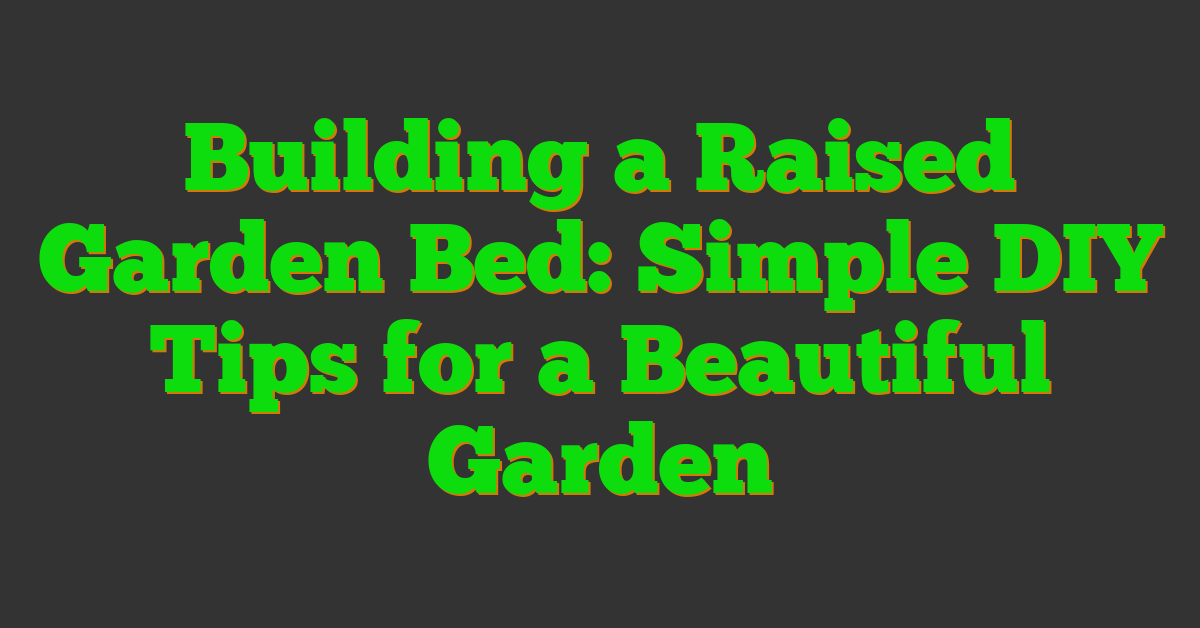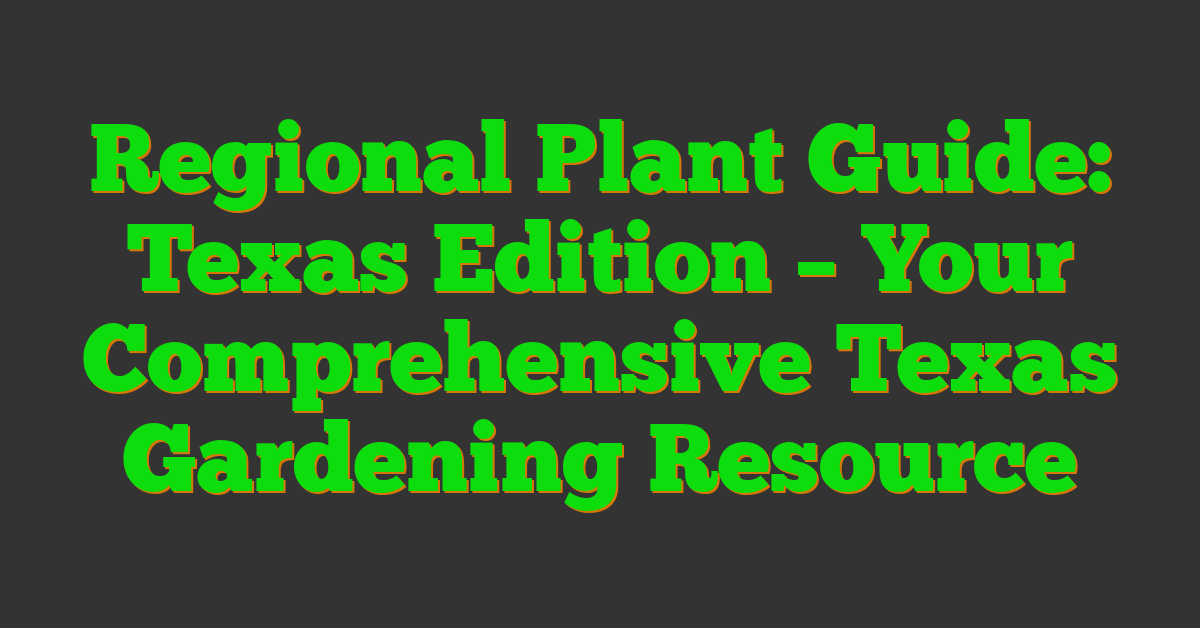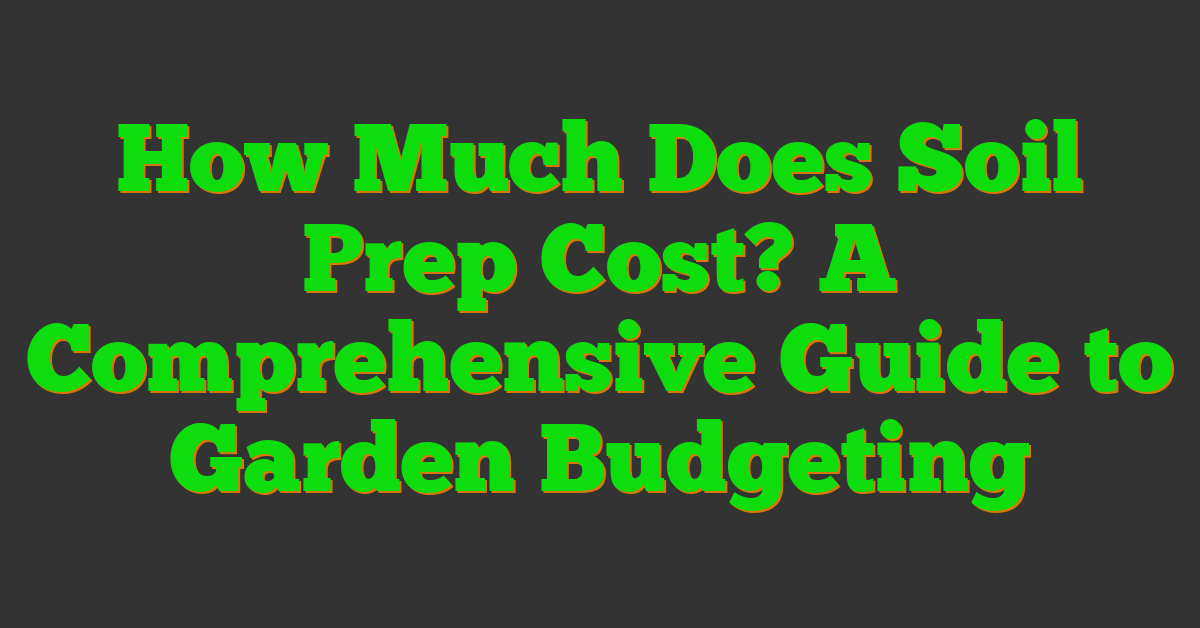Gardening has always been a passion of mine, and there’s nothing quite like the satisfaction of nurturing your own plants. Building a raised garden bed is one of the best DIY projects you can take on to elevate your gardening game.

Not only do raised beds make gardening more accessible, but they also offer better control over soil quality and drainage. In this article, I’ll share my top tips for creating your own raised garden bed, making the process simple and enjoyable.
Whether you’re a seasoned gardener or just starting out, these DIY tips will help you establish a thriving garden space that suits your needs and style.
Choosing the Right Location
Selecting the perfect spot for your raised garden bed ensures optimal growth and ease of maintenance. I consider sunlight and soil conditions to make informed decisions.
Sunlight Requirements
Raised garden beds thrive with at least six hours of direct sunlight daily. If an area receives less, plant shade-tolerant species like lettuce or spinach. Ensure no structures block sunlight during peak hours.
Soil Quality and Drainage
Optimal soil quality enhances plant health and growth. I use well-draining soil mixes to prevent waterlogging. To test drainage, fill the bed with water; it should drain within 30 minutes. Add compost to improve soil fertility and structure.
Selecting Materials
Choosing the right materials ensures your raised garden bed lasts and supports healthy plant growth. I’ll help you find the best options for your project.
Wood Types
Cedar and redwood are top choices because they resist rot and insects naturally. Cedar typically costs around $20 per linear foot, offering durability without chemicals. Redwood, priced similar, provides a beautiful finish and long lifespan. Avoid treated lumber, as chemicals can contaminate the soil and harm plants. Using untreated, rot-resistant wood guarantees a safe and sustainable garden bed.
Alternative Materials
If wood isn’t your style, consider galvanized steel for its rust resistance and sleek appearance. Recycled plastic is another option, requiring little maintenance and lasting indefinitely. Concrete blocks offer a sturdy structure that’s easy to assemble, while stone adds a natural look to your garden. Each material varies in cost and installation ease, so choose one that fits your design and budget.
Designing Your Raised Bed
Designing your raised bed ensures it meets your gardening needs. Proper planning enhances plant growth and accessibility.
Determining Size and Dimensions
Choose the size based on available space and plant types. Standard dimensions are 4 feet wide by 8 feet long, allowing easy reach from both sides. Height varies between 6 inches and 2 feet; taller beds improve drainage and reduce bending. Consider the number of plants you intend to grow, ensuring each has adequate space. For example, a 4×8 bed accommodates 16 tomato plants.
Planning Layout and Accessibility
Arrange paths for easy movement around the beds. Maintain at least 2 feet of space between beds for comfortable access. Incorporate stepping stones or mulch to prevent soil compaction. Position taller plants to the north side to avoid shading smaller ones. Install benches or seating areas if needed for longer gardening sessions. Ensure tools and materials are within reach to streamline your gardening workflow.
Building the Raised Bed
With the right tools and supplies, constructing a raised garden bed becomes efficient. Here’s what I gathered and how I built the bed.
Gathering Tools and Supplies
I organized the necessary materials and tools before starting the build.
Materials
| Item | Quantity | Size/Specifications |
|---|---|---|
| Cedar boards | 4 | 2×6 inches, 8 feet each |
| Galvanized screws | 36 | 3 inches |
| Landscape fabric | 1 roll | 6×50 feet |
| Compost | 2 cubic yards | — |
| Topsoil | 3 cubic yards | — |
Tools
| Tool | Description |
|---|---|
| Power drill | For driving screws |
| Saw | Circular or miter |
| Measuring tape | For accurate measurements |
| Level | Ensuring evenness |
| Shovel | Handling soil |
Having these items ready made the construction process smoother.
Step-by-Step Construction
I followed these steps to build my raised garden bed:
- Site Preparation: I cleared the designated area, ensuring it was level and received at least six hours of sunlight daily.
- Cutting Boards: Using the saw, I measured and cut the cedar boards to the required lengths.
- Assembling the Frame: I arranged the boards into a rectangle and secured each corner with galvanized screws using the power drill.
- Lining the Bed: I placed the landscape fabric inside the frame, cutting it to fit and preventing soil from spilling out.
- Filling the Bed: I filled the raised bed with a mixture of compost and topsoil, leveling the surface for planting.
This approach resulted in a sturdy, functional raised garden bed ready for your plants.
Filling and Maintaining the Bed
Ensuring your raised bed has the right soil mix and regular upkeep keeps your plants thriving.
Choosing the Right Soil Mix
I use a balanced soil mix to provide nutrients and proper drainage. A common ratio includes:
« Cost of Landscape Design Services: Comprehensive Pricing Guide & Budget Tips Installing a Deck: Wood vs. Composite Options – Pros, Cons & Cost Comparison »
- 40% compost: Enhances fertility and structure.
- 40% topsoil: Offers a base for plant roots.
- 20% perlite or vermiculite: Improves aeration and drainage.
| Component | Percentage | Purpose |
|---|---|---|
| Compost | 40% | Boosts nutrient content |
| Topsoil | 40% | Provides foundational support |
| Perlite | 20% | Enhances drainage and aeration |
Mix these components thoroughly before filling the bed to ensure consistency and optimal growing conditions.
Ongoing Maintenance Tips
Regular maintenance keeps your garden bed productive:
- Water consistently: I water deeply once a week, adjusting for rainfall to maintain soil moisture.
- Mulch regularly: Applying mulch retains moisture and suppresses weeds.
- Rotate crops: Changing plant locations each season prevents soil depletion and reduces pests.
- Monitor for pests: I inspect plants weekly and use natural remedies to manage infestations.
- Add compost annually: Enriching the soil each spring maintains fertility and structure.
Sticking to these practices helps sustain a healthy and flourishing raised garden bed.
Conclusion
Building a raised garden bed has been one of my favorite projects. Watching my plants flourish in the setup I created is incredibly satisfying. Whether you’re new to gardening or have years of experience, a raised bed can make your garden more manageable and enjoyable. I hope these tips encourage you to take on this DIY project and enjoy the benefits it brings. Happy gardening!
















